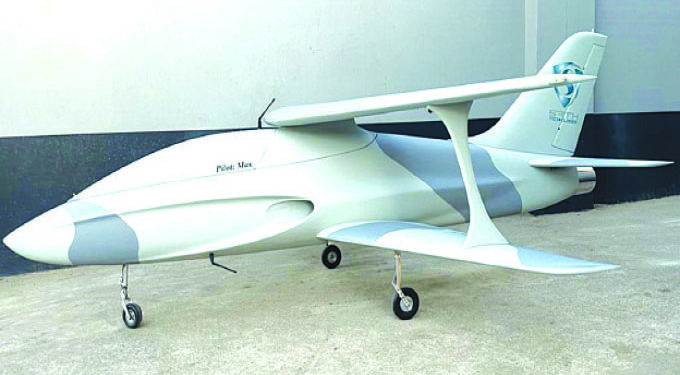Sifelani Tsiko-Agric & Innovations Editor
Zimbabwe’s innovator and inventor Maxwell Sangulani Chikumbutso has scored another first for the country by developing an unmanned aerial vehicle (UAV), commonly known as a drone, which could be used for military operations, border patrols, anti-smuggling missions, wildlife protection and delivery of medication to remote places.
The drone uses power generated using radio frequency to reach up to 11 000 feet above sea level.
The gifted innovator and Form Two drop-out from Harare told The Herald yesterday that the drone — called the Saith UAV — has unique features that could be a pathway for him to enter the highly competitive aviation and hi-tech global entrepreneurial ecosystem.
“Our drone possesses the following hitherto unparalleled capabilities — a flying endurance pursuant to which it reaches a speed of 600km per/hr and a height over 11 000 feet above sea level with a carrying capacity of 45kg,” he said.

“We are one of the few African companies that are resolutely thriving to make Africa a technology driven and pioneering continent. This places us at the very heart of Africa’s surge into the future.”
Chikumbutso is now applying the roll-up-your-sleeves determination and a penchant for entrepreneurship to fuel his Saith Holdings start-up tech company to the commercialisation stage entering the very complex technologies market.
“The drone will be effectively and efficiently deployed as an emergency first response, military attack and reconnaissance, border patrols as well anti-smuggling, national parks and wildlife protection.
“It will also be used for medication deliveries to remote places,” he said.
The young innovator is best known for developing a green power generator which can produce electricity using radio frequency.
He has also developed a prototype automated disinfecting machine to help fight the coronavirus pandemic.
Chikumbutso said he was motivated to develop the machine after watching how countries were struggling to disinfect public places.
In 2015, he unveiled his innovations at Bluff Hill Industrial Park in Harare, where he got a standing ovation from an audience which could not believe a Zimbabwean could make the crucial inventions using basic, but highly-engineered materials to design a helicopter, drone, electric car and a green power generating machine.
Chikumbutso said it cost about US$220 000 to produce the drone which he said would be sold for over US$500 000.
Through his Saith Holdings company, he said he had engaged the Air Force of Zimbabwe and the Government to seek clearance to conduct trials.
“No doubt this will prominently place Zimbabwe on the forefront of cutting edge technological innovation.
“The project will undoubtedly generate foreign currency and awesome job opportunities for our people mainly to those mechatronics and engineering graduates who have been struggling to secure employment,” he said.
The use of drones has exploded in recent years — for security, military, delivery, law enforcement, filming, and more recently health screening purposes.
Drones are increasingly being used in Africa to do precision agriculture such as spraying of crops to help cut costs for farmers and enhance efficiency.
While multiple countries have proven the benefit of using drones, challenges of regulation still remain in most African countries.
Many African nations are struggling to address a range of drone-related issues, including privacy concerns, maintaining public safety and preventing the use of drones with malicious intent.
Chikumbutso said prospects were bright that the development of his drone could help the country to explore innovative solutions for some of its most pressing problems.
“Drone technology can be applied to solve the challenge of delivering medical supplies to rural and hard-to-reach areas that are cut off from the main transportation systems in the country,” he said.
“It could also be expanded to cover life-saving deliveries for pharmaceuticals, vaccines and blood packs. Drones can also take blood and DNA tests to laboratories where the results can be analysed and methods of treatment can more accurately be determined.
“Drones have exciting opportunities and could be used in humanitarian and emergency situations saving a lot on time and lives.”









